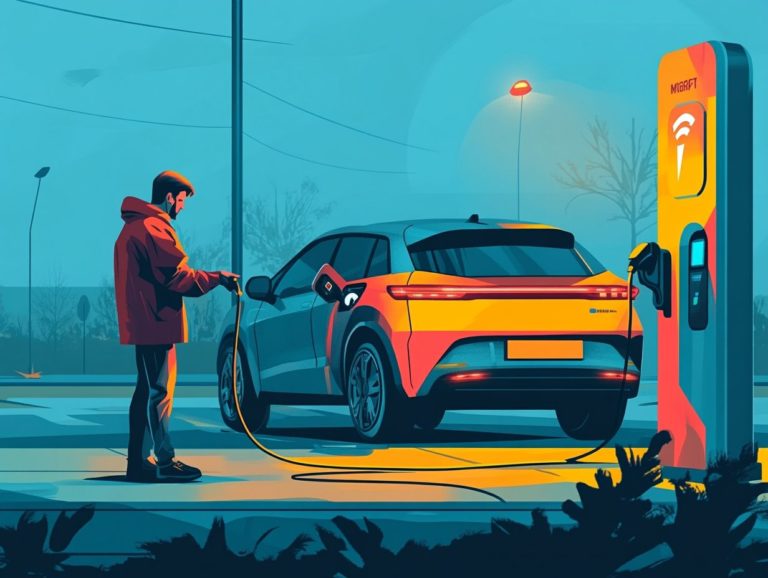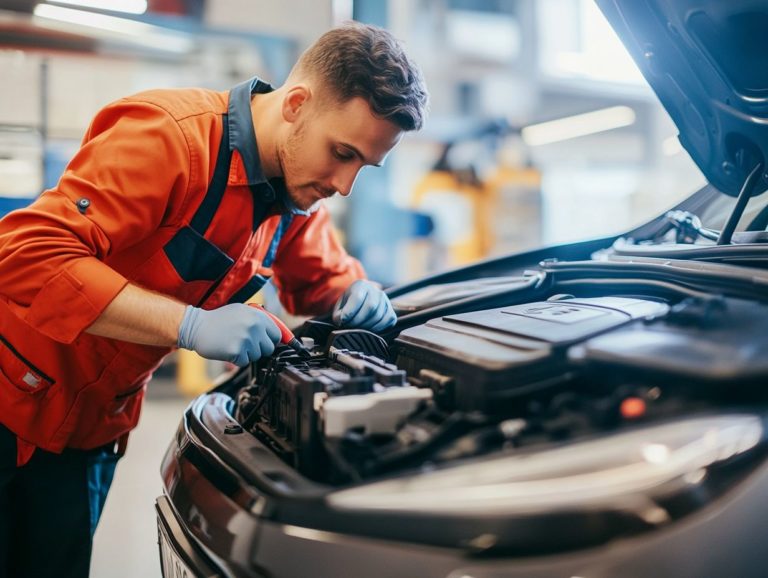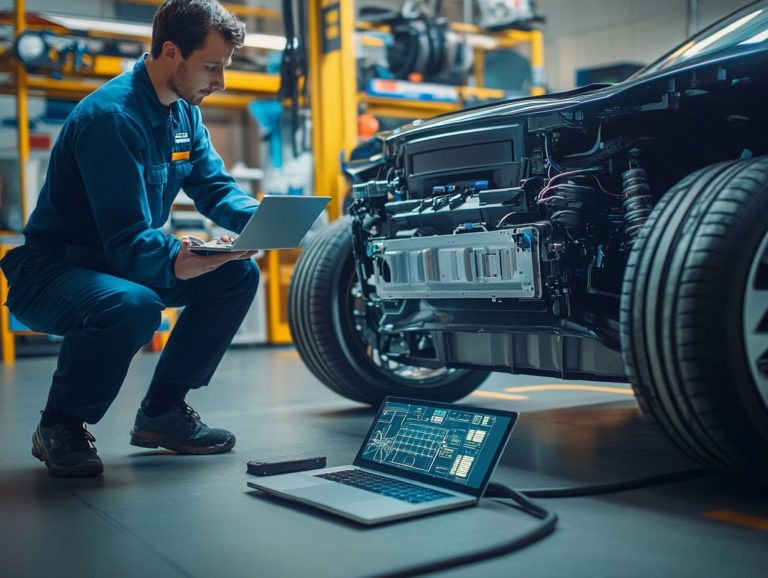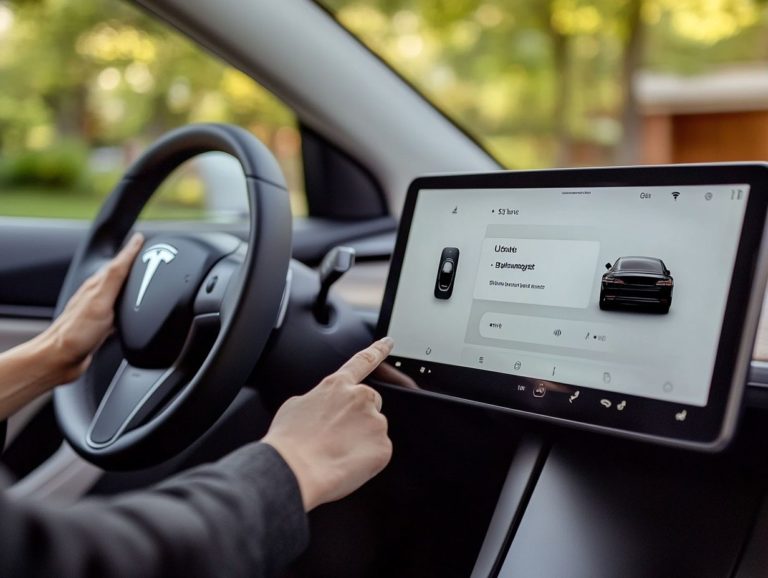5 Simple EV Maintenance Tasks for Beginners
Maintaining your electric vehicle (EV) doesn t have to feel overwhelming, even if you re just starting out in this exciting journey.
Here are five essential tasks you can confidently tackle. From checking your windshield wipers to monitoring tire pressure, these straightforward maintenance steps will enhance your vehicle s performance and longevity.
You’ll also discover the significance of regular upkeep, common pitfalls to steer clear of, and tips for caring for your EV in all weather conditions.
Get ready to keep your EV in tip-top shape!
Contents
- Key Takeaways:
- 1. Check and Replace Your Windshield Wipers
- 2. Inspect and Replace Your Air Filters
- 3. Monitor Your Tire Pressure and Rotate Your Tires
- 4. Check and Replace Your Brake Pads
- 5. Regularly Charge Your Battery
- How Often Should You Perform These Maintenance Tasks?
- Frequently Asked Questions
- What are the top 5 simple EV maintenance tasks for beginners?
- How often should I check my EV’s tire pressure?
- When should I replace my EV’s windshield wiper blades?
- What is the purpose of monitoring brake fluid levels in my EV?
- How do I clean and lubricate my EV’s door hinges?
- Why is it important to regularly inspect my EV’s exterior for damages?
Key Takeaways:
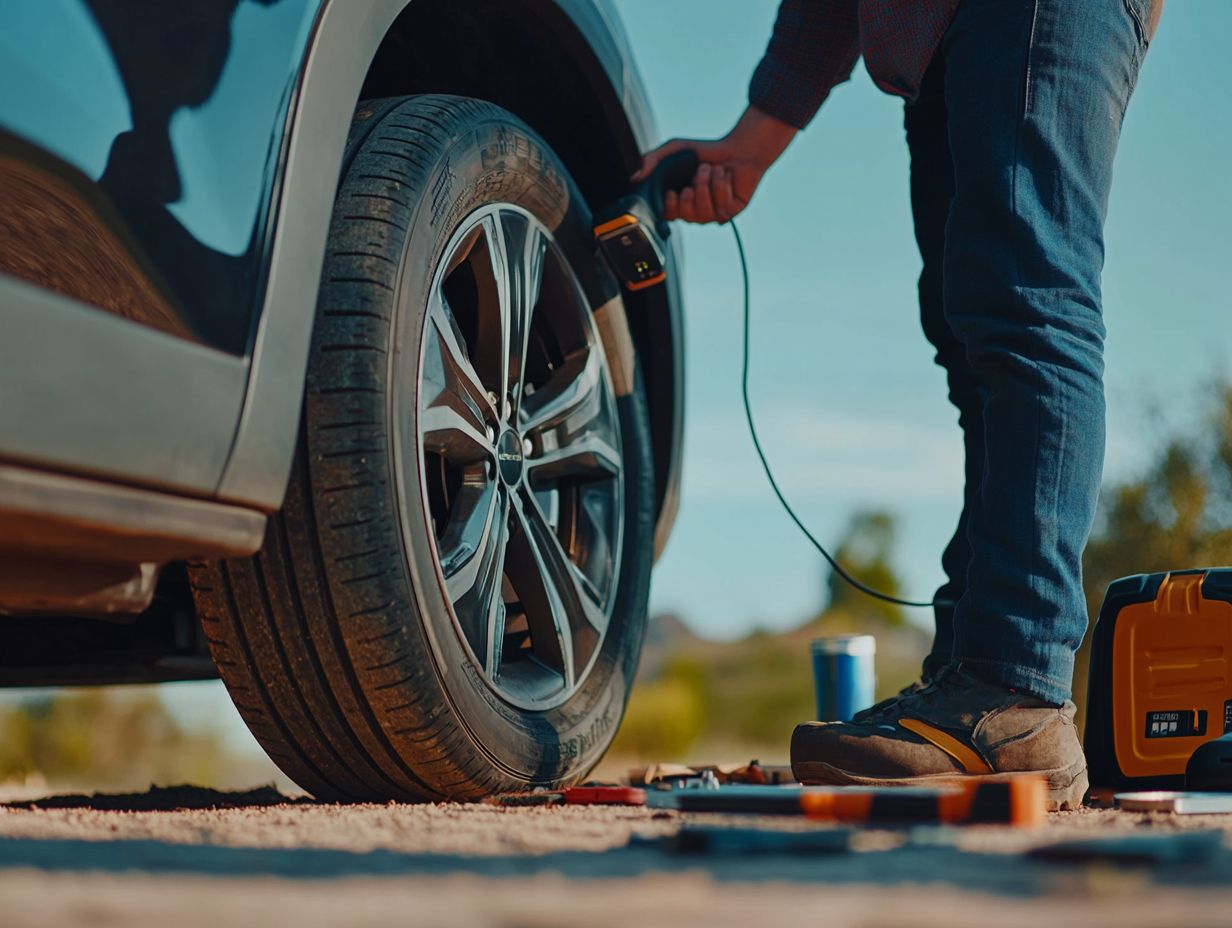
- Keep your windshield wipers in good condition to ensure visibility while driving.
- Regularly check and replace air filters for optimal performance and air quality in your EV.
- Monitor tire pressure and rotate tires to prolong their lifespan and maintain good traction on the road.
1. Check and Replace Your Windshield Wipers
For electric cars, maintaining visibility is essential, making the task of checking and replacing your windshield wipers an important part of your maintenance routine. This not only ensures your safety but also guarantees clarity while driving, particularly during inclement weather.
Good visibility elevates your overall driving experience. It also significantly reduces the risk of accidents during poor weather, like rain or snow. Worn-out wipers can lead to streaks or smudges that obstruct your view, creating potentially hazardous situations.
When selecting wipers, it’s crucial to choose high-quality options that are compatible with your specific electric vehicle model. This provides a good fit and top performance. Regularly inspect your wipers every six months and replace them annually to maintain clarity. Check fluid levels and clean the windshield to enhance visibility on the road.
2. Inspect and Replace Your Air Filters
Inspecting and replacing the air filters in your electric vehicle is a crucial yet often overlooked aspect of maintenance that can significantly influence both air quality and overall performance. By attending to this detail, you set yourself up for lower maintenance costs down the line.
A clean cabin environment is vital not just for your comfort but also for ensuring that your vehicle s heating, ventilation, and air conditioning system functions efficiently. The importance of air filters in electric vehicles cannot be overstated; they catch dust, pollen, and other particles, creating a healthier atmosphere inside the cabin while boosting the performance of the HVAC system.
To keep these filters operating at their best, check them every 12,000 to 15,000 miles, with a full replacement at least once a year or as recommended by the manufacturer. Regular inspections can help prevent blockages and maintain optimal airflow, enhancing both the efficiency and longevity of your vehicle.
3. Monitor Your Tire Pressure and Rotate Your Tires
Monitoring tire pressure and rotating your tires regularly is crucial for optimizing the performance of your electric car. Not only does it enhance driving efficiency, but it also extends the lifespan of your tires and ensures a smoother ride.
Maintaining the correct tire pressure significantly impacts your electric vehicle’s range. Under-inflated tires create increased rolling resistance, forcing your car to work harder and draining the battery faster. To keep everything running smoothly, check your tire pressure at least once a month and before embarking on long trips. Electric cars may have different tire pressure requirements compared to traditional vehicles.
Regular tire rotation every 5,000 to 10,000 miles is essential for promoting even tread wear. Keeping your tires free from debris and checking for any signs of damage can enhance road grip and overall safety. This attention to detail is crucial for you as an electric vehicle owner, allowing you to truly maximize your driving experience.
4. Check and Replace Your Brake Pads
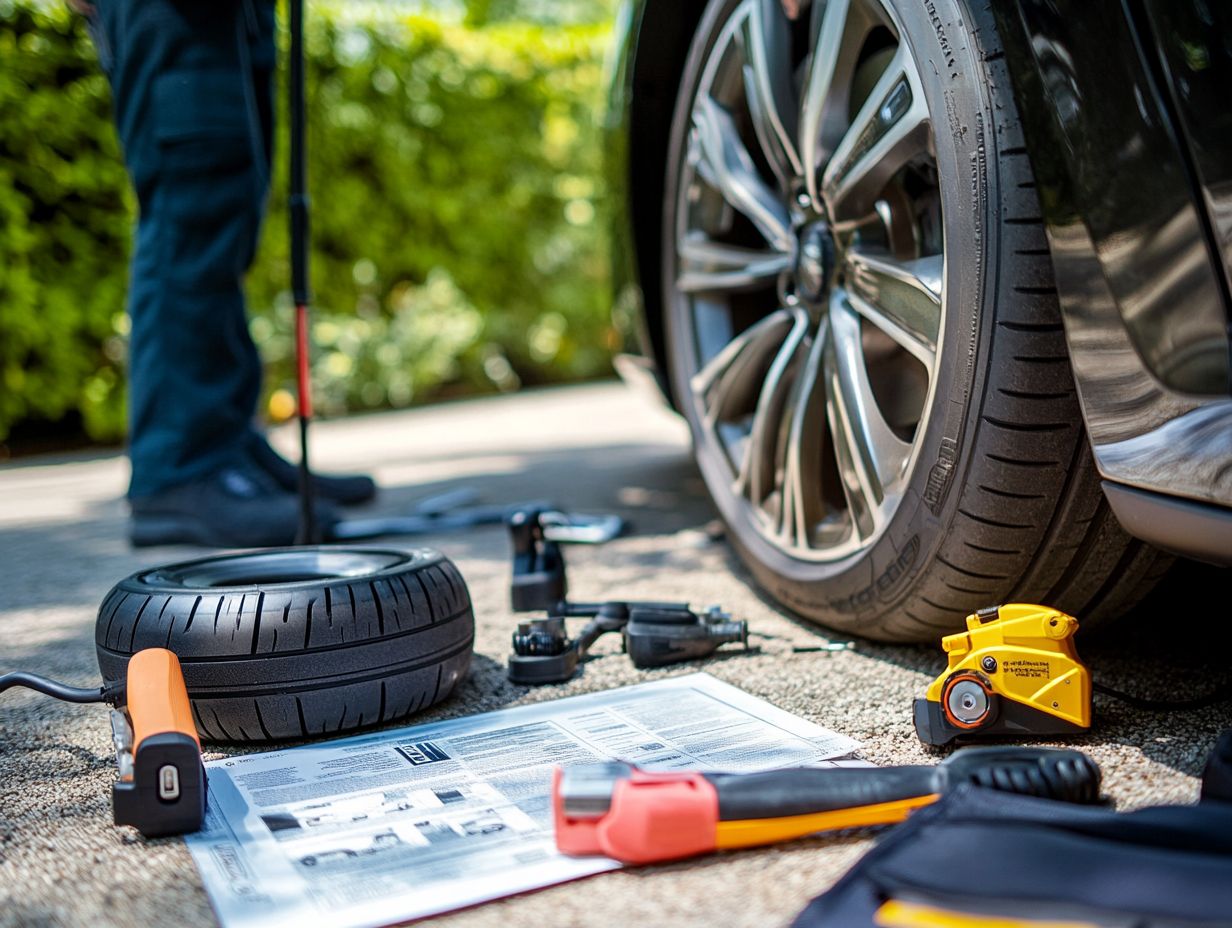
Checking and replacing your brake pads periodically is essential for maintaining safety and efficiency in your electric car. The system that helps recharge the battery while slowing down influences both braking performance and battery life.
Electric models rely heavily on regenerative braking to recapture energy during deceleration. This innovative system significantly reduces wear and tear on brake pads. As a result, they last longer than conventional counterparts. However, be vigilant; even minimal wear can compromise your braking effectiveness.
Inspect your brake pads regularly. Aim for every 10,000 to 15,000 miles. Look out for signs that indicate a need for replacement, such as:
- Squeaking sounds
- Reduced responsiveness
- A warning light on the dashboard
Timely maintenance enhances your safety and maximizes vehicle efficiency.
5. Regularly Charge Your Battery
Charge your battery regularly! This is vital for maintaining its health and longevity, ensuring you maximize its lifespan while steering clear of common pitfalls associated with electric vehicle battery care.
Establishing a consistent charging routine keeps your battery in optimal condition, enhancing your driving range and reducing risks tied to deep discharges. Maintain your battery charge level between 20% and 80%. Charging it to full capacity or allowing it to drain completely can lead to accelerated degradation over time.
Stay current with software updates that enhance battery management systems. This enables your vehicle to adapt to environmental conditions and optimize its charging habits. By adhering to these guidelines, you can significantly elevate your electric car’s performance and longevity.
How Often Should You Perform These Maintenance Tasks?
Establishing a maintenance schedule for your electric vehicle is essential to tackle common EV issues. To keep your car running smoothly, following DIY maintenance tips for electric vehicles ensures that all necessary tasks, from tire maintenance to battery care, are performed consistently to optimize performance.
By following a structured timeline, you significantly diminish the risk of unexpected problems cropping up, which could lead to costly repairs or reduced efficiency. Key tasks should be addressed at specific mileage intervals, such as:
- Rotating your tires every 5,000 to 7,500 miles
- Checking brake fluids at least once a year
- Inspecting the battery system every 10,000 miles
- Ensuring software updates are applied regularly for optimal functionality
This comprehensive approach gives you peace of mind and extends the life of your vehicle while enhancing its reliability.
What Are the Benefits of Regular EV Maintenance?
Regular maintenance of your electric vehicle enhances its performance and safety and translates to lower maintenance costs in the long run. Following the best practices for maintaining your EV means you can enjoy a more efficient driving experience while minimizing unexpected repairs.
By scheduling routine check-ups, you ensure optimal battery performance, which can extend its lifespan and improve overall efficiency. This proactive approach is crucial for keeping safety features in top shape, significantly reducing the chances of accidents. Plus, regular maintenance allows you to identify and address minor issues before they escalate into major problems, saving you from costly repairs.
In doing so, you support the longevity of your vehicle, enabling the technology to deliver its best performance over countless miles. To achieve this, learn how to keep track of your EV’s maintenance and embrace regular maintenance today to enjoy a reliable and efficient electric vehicle tomorrow!
What Are the Common Mistakes to Avoid When Maintaining an EV?
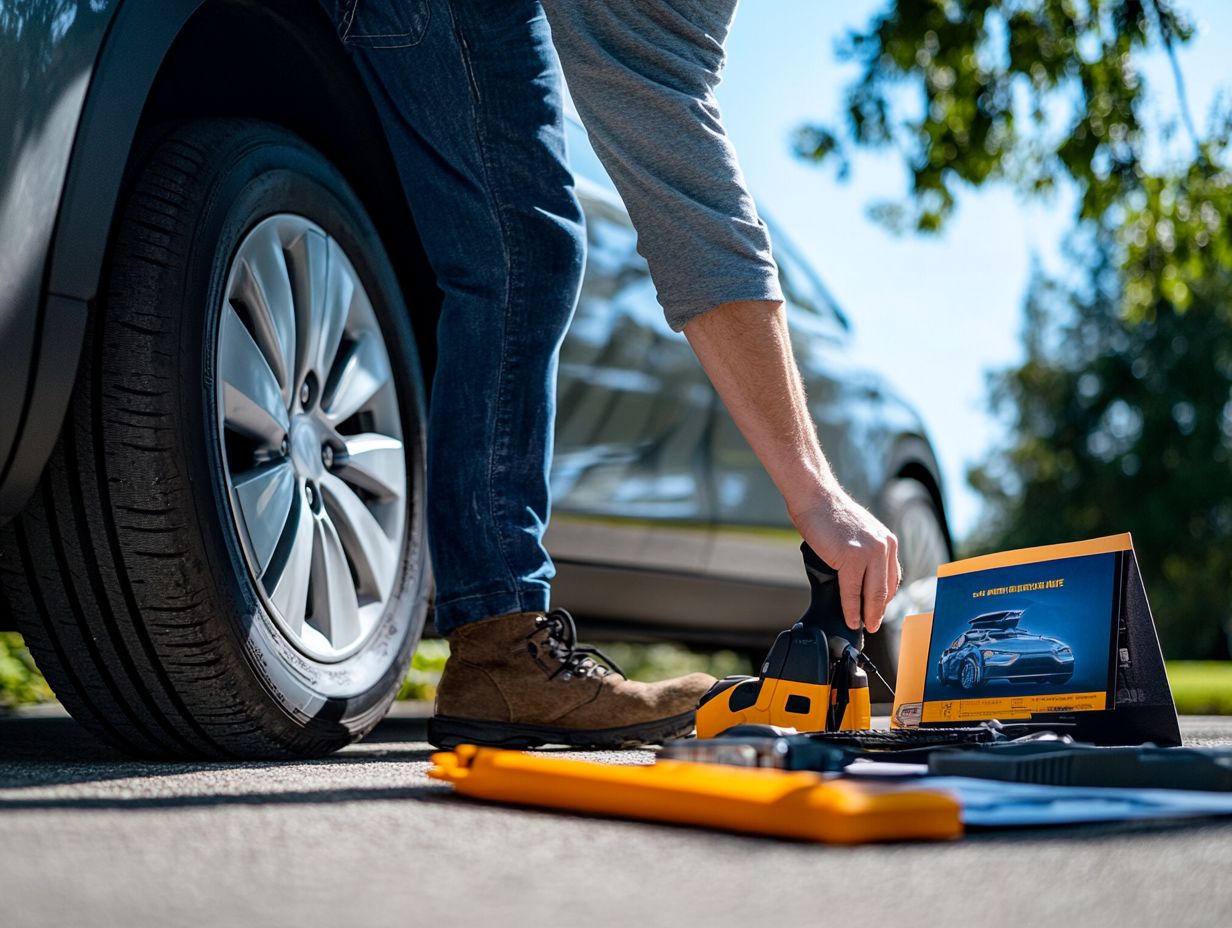
Maintaining your electric vehicle means steering clear of common mistakes like neglecting battery maintenance or overlooking how to schedule regular EV maintenance that can significantly boost your car’s efficiency and longevity.
Don’t forget to regularly check your tires for proper inflation levels. Underestimating the importance of rotating them according to the manufacturer’s recommendations can compromise your safety.
Skipping brake system inspections can lead to diminished efficiency. To avoid these pitfalls, it’s crucial to consult reputable EV services.
Taking a proactive approach in these areas ensures your vehicle remains in peak condition, helping you avoid unnecessary costs in the future.
How Can You Extend the Lifespan of Your EV?
To extend the lifespan of your electric vehicle, concentrate on practices that enhance performance. Prioritize regular battery maintenance and ensure timely software updates to keep your vehicle operating at peak efficiency.
Check fluid levels regularly for things like coolant and brake fluid. Underinflated tires can significantly increase energy consumption and diminish your vehicle’s range.
Regularly monitoring battery health is essential; it allows you to identify potential issues early. Timely corrections can avert more serious problems down the road.
Sticking to a consistent maintenance schedule not only guarantees that your mechanical components function optimally but also contributes to the overall longevity of your vehicle.
Engaging in professional assessments for comprehensive evaluations can highlight areas for improvement, ensuring your electric vehicle remains in exceptional condition for years to come.
What Are the Signs That Your EV Needs Professional Maintenance?
Recognizing the signs that your electric vehicle needs professional maintenance is crucial for preventing minor issues from snowballing into major problems. Additionally, having the right tools can help you tackle small repairs yourself; consider checking out 5 tools for DIY EV repairs. Look out for dashboard alerts, unusual noises, or decreased performance.
Pay close attention to any dashboard notifications that may signal potential concerns; these alerts are vital indicators of your vehicle’s health. For example, warning lights related to battery temperature should never be overlooked.
If you notice a sudden drop in range or hear strange sounds while driving, consider these serious red flags. Seeking quality EV services is essential; trained professionals can accurately diagnose issues and recommend preventative measures.
Early intervention not only enhances performance but also extends the lifespan of your vehicle.
What Are Some Tips for Maintaining an EV in Different Weather Conditions?
Maintaining your electric vehicle in various weather conditions involves strategic thinking. You’ll need to adjust your tire care practices and ensure proper battery maintenance, utilizing essential tools for EV maintenance at home to optimize performance and safety.
In winter, equip your vehicle with winter tires for better grip on icy roads. Colder temperatures can reduce battery efficiency, so keep your EV charged and pre-condition the battery before driving.
Summer brings challenges as well; heat can degrade battery life. Parking in shaded areas and keeping your battery cool will help alleviate these issues.
Don’t overlook tire pressure! Regular checks are a must since temperature fluctuations can cause pressure drops. By taking these steps, you’ll unlock the full potential of your EV, no matter the weather!
Frequently Asked Questions

What are the top 5 simple EV maintenance tasks for beginners?
The top 5 ways to keep your EV running smoothly for beginners are: checking tire pressure, replacing windshield wiper blades, monitoring brake fluid levels, cleaning and lubricating door hinges, and inspecting the car’s exterior for damages.
How often should I check my EV’s tire pressure?
You should check your EV’s tire pressure at least once a month. This helps ensure that your tires are properly inflated, improving your car’s performance and fuel efficiency.
When should I replace my EV’s windshield wiper blades?
Windshield wiper blades should generally be replaced every 6 to 12 months. However, driving conditions and blade quality can affect this. Regularly inspect them for signs of wear and tear.
What is the purpose of monitoring brake fluid levels in my EV?
Brake fluid is important for your car’s brakes to work well. By monitoring the levels, you can ensure that your brakes function properly and help prevent safety hazards on the road.
How do I clean and lubricate my EV’s door hinges?
To clean and lubricate your EV’s door hinges, first, use a degreaser to remove built-up dirt and grime. Then, apply a small amount of lubricant for smooth opening and closing. It’s recommended to do this every 6 months.
Why is it important to regularly inspect my EV’s exterior for damages?
Regularly inspecting your EV’s exterior can save you from costly repairs down the road. Small damages, like dents or scratches, can be fixed quickly and prevent larger issues.
Start your EV maintenance today and enjoy a smoother ride!

